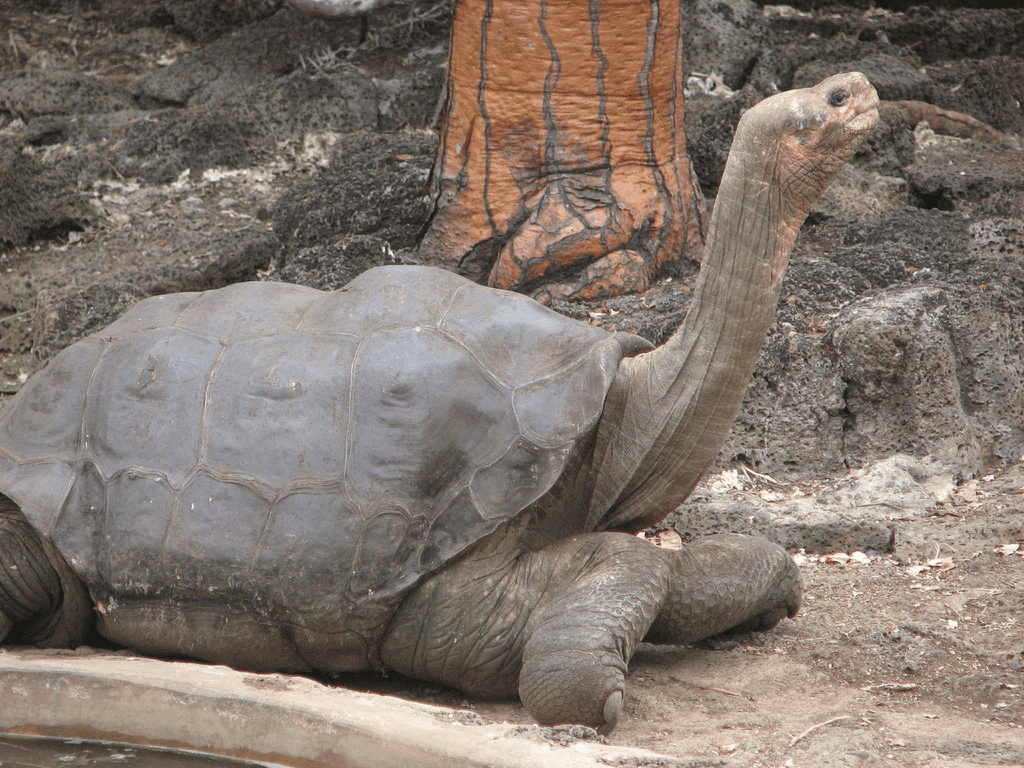When a species dies, it is usually gone for good. Four of the fifteen Galapagos giant tortoise species have gone extinct. Two of these had a distinctive saddle-shaped shell. A few years ago, some conservationists found tortoises on one Galapagos island with this saddle-shaped shell, even though the tortoises on this island usually have a domed shell. From genetic analysis, it has been determined that they are descendants of one of the extinct species! Now scientists are breeding them to bring back the extinct species to its native island.
When the Galapagos Islands were first discovered, the explorers brought live tortoises onto ships to eat them. The explorers could have moved turtles between islands, either deliberately or by throwing some overboard to lighten their load. A combination of being eaten and dealing with introduced animals, such as rats and goats, endangered all tortoises.

Most tortoises are native to one island. However, now, Floreana and Pinta Island don’t have one. The Floreana giant tortoise (Chelonoidis elephantopus), unique to the island of Floreana, went extinct in the mid-19th century. The famous Lonesome George was the last remaining Pinta tortoise (C. abingdoni), and when he died in 2012, the hope of a species died with him. The tortoises are important because they control plants and spread seeds, maintaining the ecosystem. Both of these species have a saddle-shaped shell that lets them extend their necks longer to reach taller plants. In 2008, some saddle-shaped tortoises were found living around Volcano Wolf on Isabela Island, where turtles with dome-shaped shells live. DNA from these turtles suggested that they were related to the extinct Floreana and Pinta turtles.
In 2015, a research crew came back to look for more tortoises that were descendants of the extinct species. They found 144 turtles with saddle shells and performed DNA work on blood samples. They helicoptered out 32 tortoises to Santa Cruz Island for captive breeding. Two tortoises appear to be purebred Floreana tortoises! Sixty-three more are descendants of Floreana tortoises.
Unfortunately, none were related to the Pinta tortoises. However, hope is not completely lost for the Pinto tortoise. Genetic estimates suggested that 60-70 tortoises with Pinta ancestry would be found on Volcano Wolf. In the area searched there are between 5,000-6,000 tortoises and the survey only covered a fraction of them. More Pinta descendants could be out there.

The tortoises are now being captive bred and will be returned to Floreana Island. There are reasons for hope because the Galapagos National Park Service has been successful before. It increased the number of Española Island tortoises from 15 members in the 1970s to 1000 in the wild now through a captive breeding and release program. Another lucky fact is that the tortoises selected for breeding aren’t very related. Even if there is a risk of becoming inbred, there are more tortoises at Volcano Wolf that can be bred.
The very people, explorers and first settlers, that caused the Floreana tortoises to go extinct, actually made it possible for them to be brought back now, by moving them around different islands. The unique genetic markers for Floreana tortoises were able to survive. Talk about irony!
Journal reference: Miller, J., et al. (2017) Reviving A Lost Species: The Case Of The Floreana Galapagos Giant Tortoise Chelonoidis elephantopus. bioRxiv.
Was this helpful?



